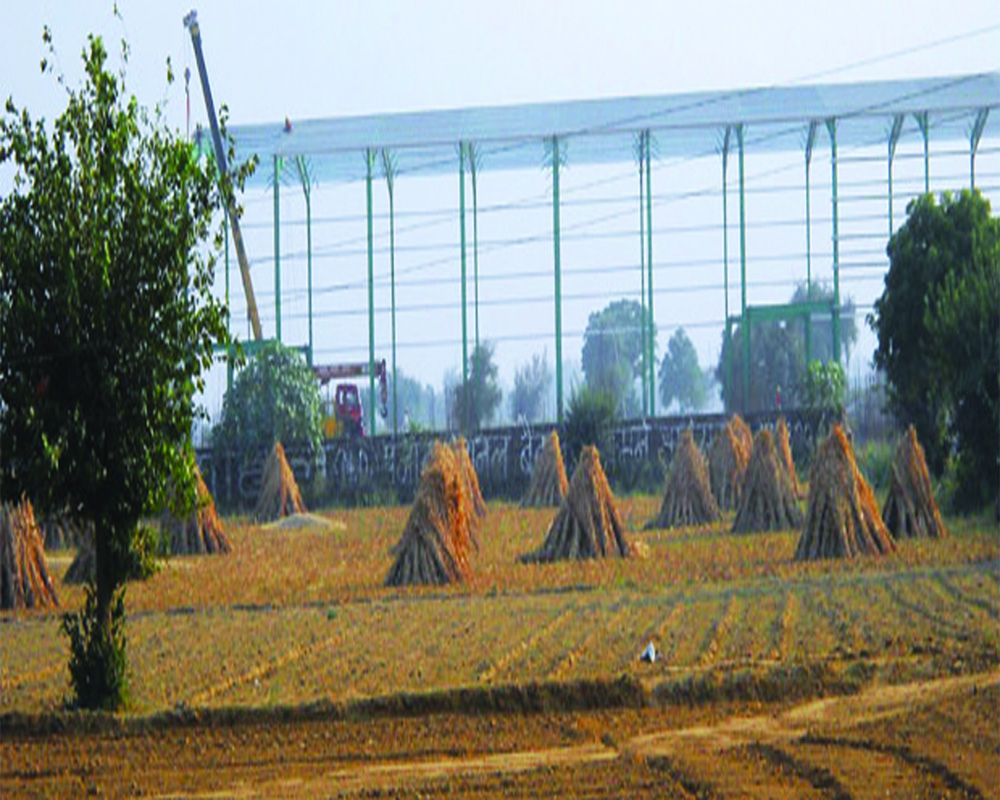The proposed SPV meant to carry out the monetisation should take essential steps for making land assets of PSUs free of any hindrances
Urban development in India is largely obstructed by the lack of availability of land at affordable prices, a key prerequisite for infrastructure development and housing. According to the Numbeo database for 2021, Mumbai is among the top 10 cities with the highest price-to-income ratios. The reason for the high price of land available for infrastructure development or residential stock in India is directly linked to the complexities of the land acquisition process.
With a number of loopholes in its current design, it has been largely debated by various researchers and policymakers. Making matters worse, the lack of clear land titles and the need for obtaining approvals and clearances from civic authorities impedes the progress of a project.
As it has been a long-standing problem, it is imperative to seek solutions and adopt appropriate policy models to address it. Taking cue from China’s journey can prove helpful. The improved infrastructure quality has been a fundamental source of China’s economic growth, which currently stands on a par with the advanced economies.
As per the World Bank’s Infrastructure Index for 2018, Beijing appeared in the top 20 ranks alongside other advanced economies with a score of 3.75. India, in contrast, was one of the low-scoring countries on the index at 2.91. This fast-paced development of the Chinese economy forces one to think about its model of infrastructure development.
Of the many steps taken by the Chinese Government, a significant effort relates to monetisation of public land to develop infrastructure. According to an estimate by Chinese researchers, the Government allocated 1,38,267 hectare of land in 2010 for infrastructure, which was around 20 per cent of the total State-owned land.
Financial support in the form of this land allocation can be gauged by the fact that had State Governments purchased the same at market rates, they would have ended up paying 1,292.8 billion yuan, amounting to 31.8 per cent of their total revenue in 2010. This model can be replicated and adopted by India by making unutilised land with Government departments and Public Sector Undertakings (PSUs) available to private players for infrastructure development or housing construction, thereby filling the existing gap.
The Union Budget 2021-22 has proposed monetisation of land belonging to the Government-owned companies and PSUs by way of direct sale, concessions or other suitable means. The plan is to launch a Special Purpose Vehicle (SPV) in this pursuit. The decision is likely to free up a large extent of land for building infrastructure and affordable housing projects. According to various estimates available in public domain, the land held by various Government agencies is over 5,00,000 HA, of which, over 1,60,000 HA is held across various airports, seaports and by the railways. Approximately 11.8 lakh acres is owned by the Railway Ministry, out of which about 1.26 lakh acres is not in any kind of use. For the proposed land monetisation, it is pertinent to ensure preparation on various fronts. First, record of lands with plot ownership and boundaries should be available in an updated form, without any disputes or any other encumbrances like lease terms of the PSUs. Though States are making substantial progress in digitising land records, there is still a long road ahead for improving its quality, as has been exhibited by National Council of Applied Economic Research (NCAER) Land Records and Services Index (N-LRSI) in its 2020 and 2021 editions. The proposed SPV meant to carry out the monetisation process should take the essential steps for making land assets of PSUs free of any hindrances.
Canada’s experience can offer some useful lessons in designing an SPV — Canada Lands Company — identifies and purchases surplus properties (including Government-owned land) at market prices. It further manages the purchased properties and finally sells it to private entities.
Since 1995, it has developed 2,000 affordable housing projects. Second, land prices valuation, which has proved to be a major roadblock for loan acquisition procedures, should be determined through a detailed analysis of market rates and potential gains from the proposed project.
Lastly, Central and State Governments should take the necessary steps to limit the requirement of multiple approvals required to kick off an infrastructure or real estate project. This comes across as the biggest bottleneck as observed from heaps of land parcels lying unutilised in the States’ land banks as private companies avoid the tedious approval and clearance processes that are necessary to secure access.
With increasing requirements of infrastructure resources and housing stock in Indian cities, there is an urgent need to optimise land resources. If adopted with adequate measures, Government land monetisation can be an efficient policy step that captures real estate value of unutilised public land, augments revenues of local, Central and State Governments and also mitigates problems posed by escalating land prices.
The writer is anAssociate Fellow at the National Council of Applied Economic Research. The views expressed are personal.
























